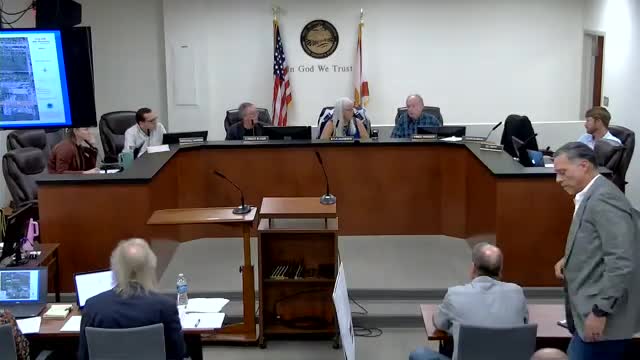Controversial zoning changes spark heated planning commission debate
October 22, 2024 | Walton County, Florida
This article was created by AI summarizing key points discussed. AI makes mistakes, so for full details and context, please refer to the video of the full meeting. Please report any errors so we can fix them. Report an error »

In a recent government meeting, officials engaged in a heated discussion regarding a proposed zoning change that has raised concerns among members about its implications for local development and community standards. The meeting revealed a complex interplay between existing zoning laws, proposed changes, and the potential impact on surrounding neighborhoods.
Key points of contention centered around the introduction of a Land Use Restriction Agreement (LURA) that was presented to the committee shortly before the meeting. Some officials expressed frustration at being asked to evaluate the proposal without having seen the LURA beforehand, questioning the validity of the recommendation for approval based on incomplete information. The discussion highlighted the importance of reviewing the original application without the LURA, as it was initially assessed without it.
Concerns were also raised about the implications of contract zoning, where the development agreement is seen as a means to mitigate potential issues related to the zoning change. Officials debated whether the proposed changes would adequately address community concerns, particularly regarding density and the transition from conservation residential zoning to a more commercial designation.
The conversation further delved into the transparency of the LURA process, with officials noting that while these agreements are recorded in public records, they may not always be adequately communicated to potential property buyers. This lack of awareness could lead to misunderstandings about the nature of the property and its future use.
As the meeting progressed, officials acknowledged the challenges of balancing property rights with community expectations. The proposed change would allow for a maximum impervious surface ratio (ISR) increase from 40% to 60%, raising questions about environmental impacts and the preservation of open space.
The meeting concluded with a call for public comments, indicating that the discussion around this zoning change is far from over. As the community awaits further developments, the implications of this proposal will likely continue to resonate among residents concerned about the future of their neighborhoods.
Key points of contention centered around the introduction of a Land Use Restriction Agreement (LURA) that was presented to the committee shortly before the meeting. Some officials expressed frustration at being asked to evaluate the proposal without having seen the LURA beforehand, questioning the validity of the recommendation for approval based on incomplete information. The discussion highlighted the importance of reviewing the original application without the LURA, as it was initially assessed without it.
Concerns were also raised about the implications of contract zoning, where the development agreement is seen as a means to mitigate potential issues related to the zoning change. Officials debated whether the proposed changes would adequately address community concerns, particularly regarding density and the transition from conservation residential zoning to a more commercial designation.
The conversation further delved into the transparency of the LURA process, with officials noting that while these agreements are recorded in public records, they may not always be adequately communicated to potential property buyers. This lack of awareness could lead to misunderstandings about the nature of the property and its future use.
As the meeting progressed, officials acknowledged the challenges of balancing property rights with community expectations. The proposed change would allow for a maximum impervious surface ratio (ISR) increase from 40% to 60%, raising questions about environmental impacts and the preservation of open space.
The meeting concluded with a call for public comments, indicating that the discussion around this zoning change is far from over. As the community awaits further developments, the implications of this proposal will likely continue to resonate among residents concerned about the future of their neighborhoods.
View full meeting
This article is based on a recent meeting—watch the full video and explore the complete transcript for deeper insights into the discussion.
View full meeting